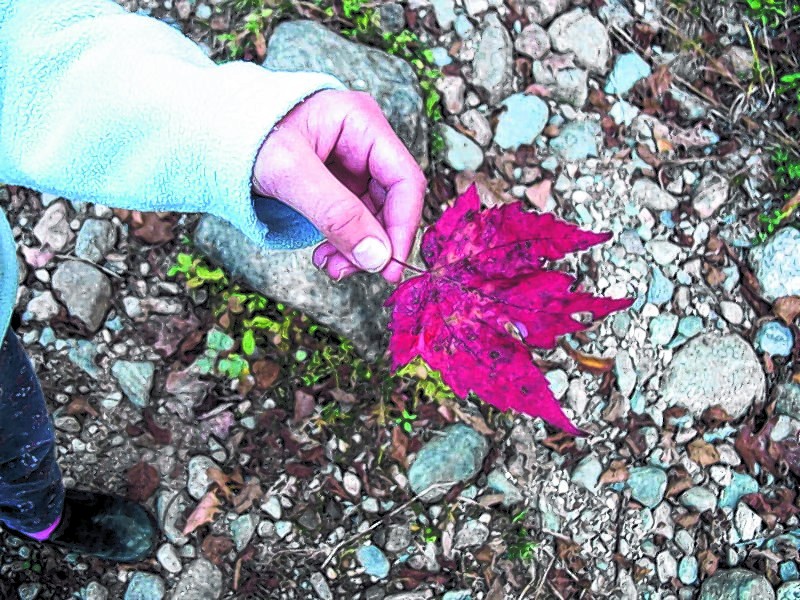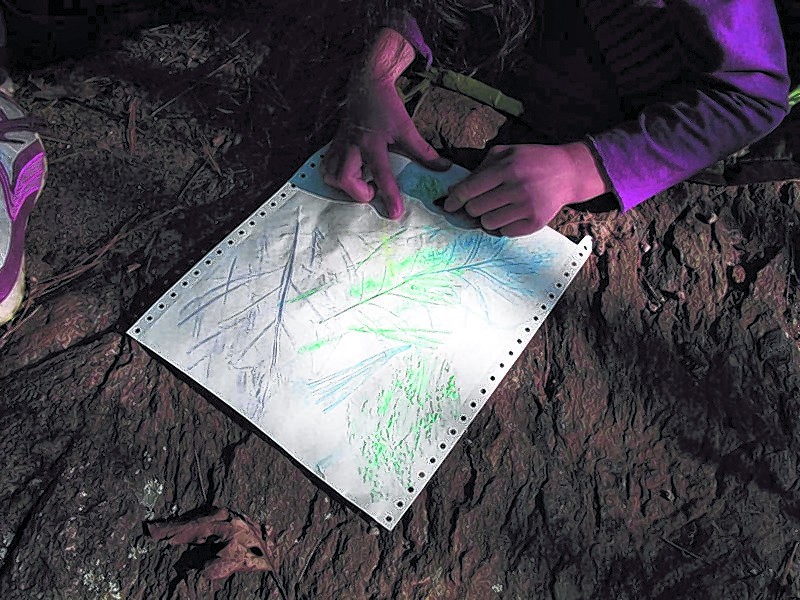It’s raining leaves around the state right now and that makes it a great time of year to teach kids (and yourself) about the trees around you.
When the girls were small, I knew very little about the various trees in my backyard, let alone the ones on the hiking trails we visited. My standard reply when the kids presented a leaf for me to identify was “I don’t know,” followed by, “We’ll look it up on the computer when we get home.”
Then, while hiking around Wolfe’s Neck Woods State Park in Freeport several years ago, we happened upon a ranger who suggested we try the park’s Tree Hunt program. It’s a self-guided hunt to identify trees.
The activity worksheet was a great introduction to tree identification and having a ranger there to answer questions ensured we matched the tree names with the leaves correctly. This program is still offered at the park periodically (ranger programs are offered every Sunday at 2 p.m., year-round) and no preregistration is required.
Attending a program doesn’t always work in my busy family’s schedule, so we joined the Maine Tree Club. The club is a statewide educational project that has been around since 2002 and is run through the University of Maine Cooperative Extension, with assistance from the Maine Forest Service, Pine Tree Arboretum and the Pine Tree State 4-H Foundation.
Participants are sent (electronically or hard copy mailing) tree fact sheets each month for a total of 50 trees over the course of the two-year program. The start-up packet includes a notebook to store the monthly mailings as well as the “Forest Trees of Maine” pocket guide and a magnifying lens.
We have found the guide very helpful and it continues to be a staple in our hiking backpack. The kids love the lens and use it to magnify not only tree leaves and needles but flowers, bugs and anything else they find out on the trail.
Amy Witt, a horticulturist for UMaine Cooperative Extension and coordinator of the Maine Tree Club, offers a couple of generalizations (there are exceptions, but for novices it’s a place to start) for narrowing down options when you have a leaf in hand and a child eager to identify it.
Witt offers this advice for identifying deciduous trees:
“On the branch, look to see if the leaves are organized in an alternating (zigzag) pattern or opposite (directly across from each other) pattern. For instance, oak tree leaves have an alternate (pattern on the branch) but maple leaves are opposite. There are more alternate pattern trees than opposite, so that can help you narrow it down.”
Other differences to look for are leaf lobes (the rounded edges around the leaf) as well as bark, seeds and nuts.
“Maple and oak both have lobes but the lobes on the oak leaves tend to be longer and narrower than maple. Also, oak trees have acorns, so if you see acorns you know it’s going to be some kind of oak tree,” explains Witt.
According to Witt, evergreens (trees with needles) have different identifiers.
“Pine tree needles are long and in bundles. Spruce needles are short and sharp. Actually the only sharp needles are spruce trees (in Maine). Fir tree needles are also short but not sharp. Hemlock needles are short as well, but they are flatter than the others.”
The first tree my kids learned to identify with confidence was the white pine. They learned from a park ranger that there are five letters in the word w-h-i-t-e, which corresponds to the five needles in a bundle on this pine tree.
When we first started identifying trees, we narrowed our focus to four types of evergreens. The kids, 7 and 8 years old at the time, developed their own way to remember each tree.
White pine: “There are five in a bunch and they are very long and soft.”
Red spruce: “The needles are as flat as Flat Stanley. The needles grow up to the sky and they are sharp and hard. I don’t like getting pricked by the needles.”
Balsam fir: “They have longer, flatter needles than the Eastern hemlock. Balsam fir trees are used for Christmas trees.”
Eastern hemlock: “They have darker needles than the other pine trees and they have two white stripes underneath. They are short and flat.”
My family members are by no means experts at tree identification, but we have learned what indicators to look for and we keep our guidebook handy to confirm our findings. There are times, though, that the kids prefer to make leaf rubbings with crayons and paper and/or collect the colorful leaves on the ground so they can wax them at home to make a collage.
No matter what the preference is on any given hike, fall is a great time to be outside to enjoy the splendor of Maine’s many trees.
Staff Writer Wendy Almeida can be reached at 791-6334 or at: wea@mainetoday.com
Send questions/comments to the editors.




Success. Please wait for the page to reload. If the page does not reload within 5 seconds, please refresh the page.
Enter your email and password to access comments.
Hi, to comment on stories you must . This profile is in addition to your subscription and website login.
Already have a commenting profile? .
Invalid username/password.
Please check your email to confirm and complete your registration.
Only subscribers are eligible to post comments. Please subscribe or login first for digital access. Here’s why.
Use the form below to reset your password. When you've submitted your account email, we will send an email with a reset code.